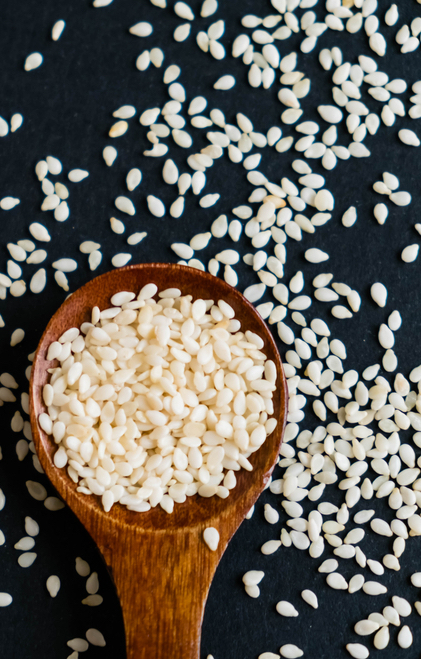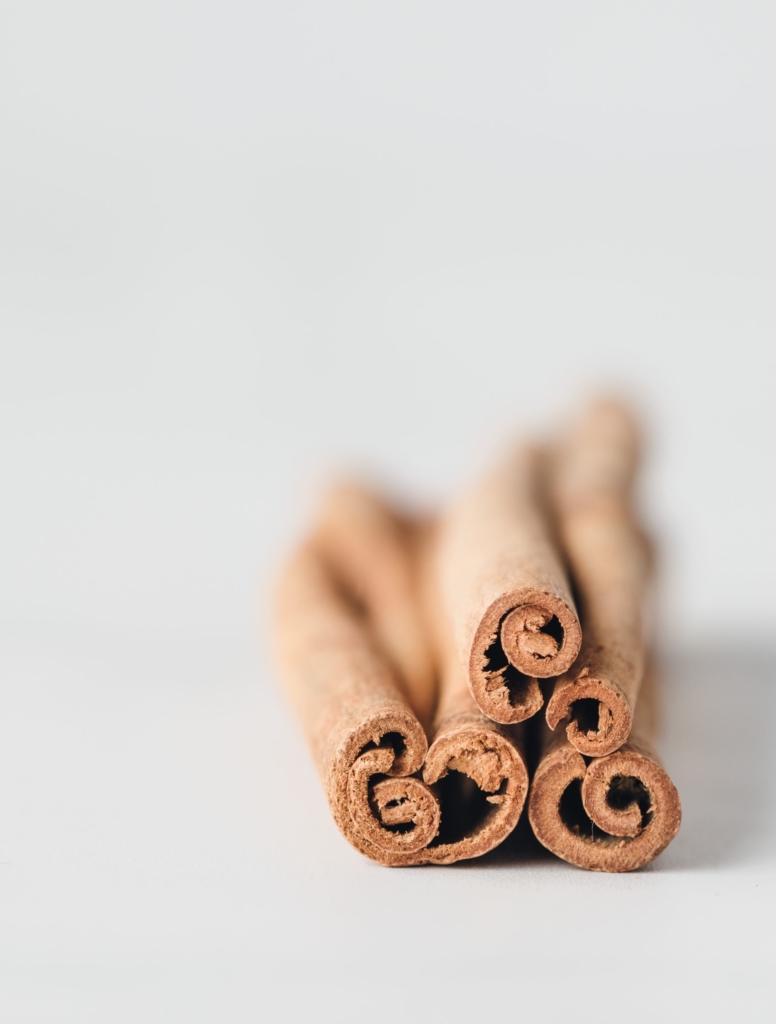DO YOU HAVE ONE OF THESE COMMON HORMONE IMBALANCES? HERE’S HOW TO TREAT IT NATURALLY
They’re More Common Than You Think

Bloating, mood swings, trouble focusing, fatigue…all of these are signs of hormonal imbalance. You might recognize them as symptoms of PMS or Menopause, which are natural changes in your hormone levels. But they can also be signs of unnatural hormone fluctuations that can be bad for you in the long run, so it’s important to know what to look for.
Unfortunately, hormonal imbalances are more common than you might think. But luckily, they’re treatable! And with a little help from Eastern medicine, you can find safe, natural ways to get your hormones back into balance. Here’s how:
How To Treat Hormonal Imbalances With Eastern Medicine
Cortisol Imbalance
Cortisol, better known as “the stress hormone” because it’s released when you’re anxious or nervous, is made in your adrenal gland. It helps your body regulate things like blood sugar levels, your metabolism, and inflammation. When it’s released into your body, your digestion and reproductive systems briefly shut down.
If your cortisol levels are too high, you might get flushed easily, feel thirsty more than usual, have an irregular period, experience mood swings, and have a lower sex drive than normal. You might also gain weight and have high blood pressure. High stress levels can rocket up your cortisol levels, along with pituitary gland problems and Cushing disease. On the other hand, if you have low cortisol, you might feel dizzy, fatigued, and lose weight for no reason.
Eastern Medicine Treatments For Cortisol Imbalances
If your doctor has ruled out gland issues and Cushing disease but you still have high cortisol, it’s time to destress. You know the drill–get plenty of sleep, move your body regularly (this lowers chemicals like adrenaline and cortisol), and eat a balanced diet without too much processed sugar. Some foods that lower cortisol include dark chocolate, green tea, and bananas. It’s also important to stay hydrated throughout the day to keep a lid on your cortisol levels.
Adaptogens, herbs used in Traditional Chinese Medicine (TCM) and Ayurvedic medicine to help the body regulate stress, are natural remedies for regulating cortisol levels. Here are some to try:

- Ashwagandha: This Ayurvedic her
b has become trendy lately for its stress-relieving properties, but its been used as an herbal medicine for thousands of years. Studies have found that taking Ashwagandha can lower your cortisol by as much as 30%. - Licorice Root: Licorice root is known for helping your body maintain cortisol levels by stopping your body from turning cortisol into cortisone. However, it’s important not to consume too much licorice, because this can cause problems with your blood pressure and even cause other hormone imbalances. If you are taking it as tea, consume it mindfully and stop when your body says “enough.”
- Astragalus: Astragalus, also known as Huáng Qí in TCM, helps to lower your cortisol levels by supporting the HPA Axis, which includes your pituitary and adrenal glands. It’s also great for your immune system (which is why we put it in our readywell formula).
Estrogen
Did you know that both men and women have estrogen? Women just tend to have a lot more and they experience different effects than men do. For women, estrogen fluctuates throughout their lives, like during puberty, your menstrual cycle, and menopause. Estrogen not only supports your period, but it helps strengthen your bones, heart, and even support your mood. For both men and women, it also regulates cholesterol levels.
If you have high estrogen levels as a woman, you might notice breast lumps, feeling tired, depressed or anxious, weight gain, and a low libido. For men, this looks like infertility and large pectoral muscles. Estrogen fluctuates throughout the month, but levels can also be affected by medications like antibiotics and birth control. Low estrogen is usually caused by menopause and can make your skin dry, give you hot flashes, and mess with your mood.
Treating Estrogen Imbalances Naturally
If you’re going through menopause and want to up your estrogen levels, here are few simple ways to do that with TCM:
- Soy: Phytoestrogens from soy-based foods like miso, edamame, and tofu imitate our body’s natural estrogen, so eating them can raise your levels.
- Dong Quai: Dong Quai, also known as female ginseng, is a TCM treatment for menopause thanks to its high phytoestrogen content.
- Sesame Seeds: Sesame seeds are commonly used in Asian cuisine, but they’re not just a crunchy tasty treat. They also are high in phytoestrogen and have been found to raise estrogen levels for premenopausal women.
On the other hand, if you’re trying to lower your estrogen, you should cut out any foods that raise estrogen like the ones above. You can also add ground flaxseed to your diet to regulate your estrogen levels, ditch or decrease your caffeine levels (try swapping your morning latte with green tea), and cut back on drinking. These are all proven to help lower estrogen if your levels are too high.
Insulin
Most people associate insulin imbalances with diabetes. But even if you’re not diabetic, you might still have trouble maintaining your insulin levels. Insulin is made in your pancreas and helps your muscles and liver absorb blood sugar and regulates your metabolism.
If you have high insulin levels, whether you’re diabetic or not, you’ll probably experience hypoglycemia, aka low blood sugar. When this happens, you might notice feeling panicked, dizzy, or super hungry. You could also feel some heart palpitations or get shaky and notice the color drain from your face. For a quick fix, much on a carb-rich snack or a sugary drink.
Some people have insulin resistance, which means their body doesn’t absorb blood sugar well. That causes the sugar to build up in your blood and can result in prediabetes. Being overweight, not getting enough sleep, not working out, and high blood pressure can all cause insulin resistance (and even diabetes).
How To Treat Insulin Resistance With Eastern Medicine
There’s a few herbal remedies from TCM and Ayurveda that can help you regulate your insulin levels. Here’s the ones to know:
- Cinnamon: Cinnam
 on isn’t just for snickerdoodles and lattes. In TCM and Ayurveda, this delicious spice is used for everything from lowering inflammation to boosting digestion. But it can also help control your blood sugar levels by mimicking insulin and helping your body absorb glucose. It’s also great for lowering blood sugar after a meal by blocking the breakdown of carbs. Make sure to take a dose between 3-10 grams for cinnamon to take effect.
on isn’t just for snickerdoodles and lattes. In TCM and Ayurveda, this delicious spice is used for everything from lowering inflammation to boosting digestion. But it can also help control your blood sugar levels by mimicking insulin and helping your body absorb glucose. It’s also great for lowering blood sugar after a meal by blocking the breakdown of carbs. Make sure to take a dose between 3-10 grams for cinnamon to take effect. - Berberine: Berberine is a compound that’s found in plants like barberry and goldenseal, but you can also find it as an independent supplement. Berberine helps people with diabetes lower their blood sugar levels by lowering insulin resistance. It also lowers cholesterol and can help control your weight.
- Black Seed: Black seed, also known as Nigella Sativa, is an Ayurvedic remedy that is a strong tasting powerful treatment for insulin resistance and even diabetes. When combined with turmeric, black seed can lower blood sugar. Overtime, black seed lowers your overall blood glucose levels and helps decrease insulin resistance. Researchers think that black seed is good at helping with this hormone imbalance because of an antioxidant known as thymoquinone.
Our hormones shift all the time–over the course of a day, a month, or a decade. And it can be both normal and healthy! But if you’re feeling weird and can’t quite figure out why, it might be a hormone imbalance. Talk to your doctor about your concerns and try some of these natural remedies from Eastern medicine to help find your balance.
Newer
Living For The Weekend? How To Ditch Sunday Scaries With TCM
Older
3 Simple TCM Tips For Dealing With A Panic Attack
Comments (0)
Leave a reply
You must be logged in to post a comment.




